Mostly antiquities, artifacts, and relics from the ancient and medieval periods up to the 19th century, as well as some miscellaneous history
Last active 60 minutes ago
Don't wanna be here? Send us removal request.
Text
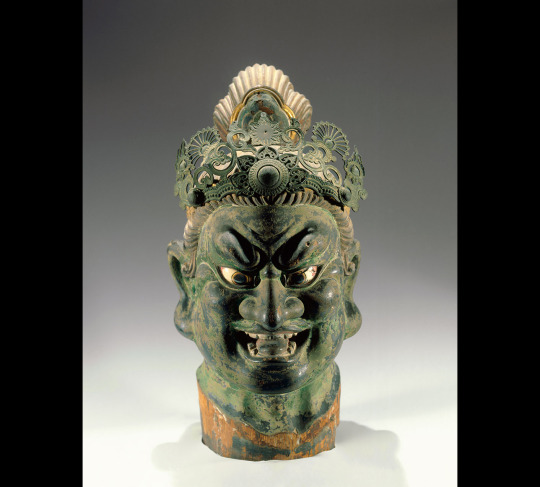
Head of a heavenly protector of a Buddhist temple, the Kamakura Period (1185–1333) 13th century. Brooklyn Museum. It represented one of the four guards positioned in aggressive posture around the statue of a seated Buddha in the temple. Traces of bright-green paint remain, while the other guards were painted in yellow. Together they faced the four cardinal directions. The function of these statues was purely apotropaic, meant to scare away anything that threatened the religion.
272 notes
·
View notes
Text



Accessorising the new cotehardie a little, as a treat. I don’t know why all these turned out so serious 😂
Also holy shit, all of this is entirely handsewn (including the not-visible shift and hose). Reenactor goalpost reached o.o
4K notes
·
View notes
Text
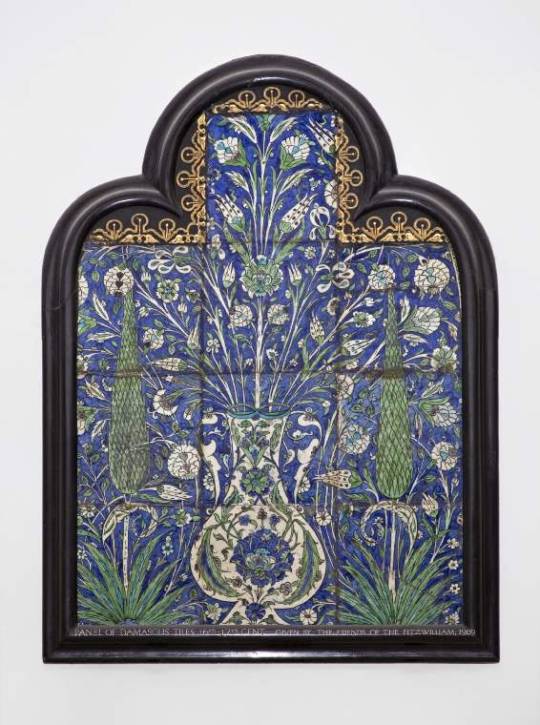
Tile panel, Ottoman, 16th-17th century
from The Fitzwilliam Museum, Cambridge
127 notes
·
View notes
Text
A lot of people in the world are simply not being excellent to each other and I do not know how I am meant to party on, dude, in these conditions
6K notes
·
View notes
Text
This classic scene from Blazing Saddles...
youtube
The AI Loss List
I'm making a list of everything we wouldn't have in acted media if we replaced every actor with AI. This will not be a comprehensive list, but if you can think of any moments that aren't already on the list, just add them somewhere. For all some people feel like being able to hear their favourite actore read them their homework is cool, it's time to really look at what we'd lose.
Baldur's Gate 3 - Astarion's dealing with Cazador, and the aftermath. That was not scripted. It was done in one take. Neil Newbon just ... acted. The performance director watched that and went, "...Yeah, we caught the lightning in the bottle; we're done".
Midnight Cowboy - "I'm walkin' here!" The problem with filming on location in NYC is that ... well, there's traffic. There's always going to be traffic. So they were shooting that scene, a taxi nearly hits Dustin Hoffman and instead of being shocked out of character, he reacts in character, and well enough that it's now one of the movie's most iconic lines.
Raiders of the Lost Ark - the sword scene. Filming on location presents other hazards. Harrison Ford was dealing with a case of dysentery while he was filming Raiders of the Lost Ark, and was looking down the barrel of actually having to do a whole swordfight in that condition. So he turned around to Spielberg and went, "...Can I just shoot him?" And apparently ... yes he could.
Star Wars V: The Empire Strikes Back - Han going into carbonite. Carrie Fisher's "I love you" was scripted. Harrison Ford's "I know" was not. Ford felt that it fit the character and the relationship dynamic better. He was right.
Basically point at a Robin Williams movie and understand that there's at least a half-dozen moments of Robin Williams improv in it. Hell, by the time we got to Good Will Hunting, they shot the last scene (which was going to be the closing line of the film) multiple times, just getting Williams to ad-lib each time.
Aliens gets a mention in the quotes, but things I didn't know were things like James Cameron allowed the actors playing the marines to customise their own gear.
The "like tears in rain" speech in Blade Runner was actually shortened a bit by Rutger Hauer, with "...like tears in rain" added at the end.
In Star Trek IV: The Voyage Home, that whole thing where Nichelle Nichols and Walter Koenig were asking pedestrians for directions to the "nuclear wessels"? Those were actual pedestrians. Not actors. Just ... imagine being in San Francisco in 1986 and having this very Russian dude who you may or may not recognise asking that. (I mean, probably someone noticed cameras? But maybe not; I have literally walked into an outdoor filming on my way to work without realising.)
This doesn't fit in lines, but Anthony Hopkins' hissing noise after talking about how he ate the census taker's liver? Ad lib.
Reservoir Dogs - The torture scene was in the script. The talking into the severed ear? Not so much.
A few lines that I didn't even know were improv or ad-lib:
"We're gonna need a bigger boat" - Jaws
"Heeeeeeeeeere's Johnny!" - The Shining
"Here's lookin' at you, kid." - Casablanca
"You can't handle the truth!" - A Few Good Men
"You know... Morons." Blazing Saddles
"I am Iron Man" - Iron Man
"You talkin' to me?" - Taxi Driver
"I don't wanna go." Avengers - Infinity War
"Game over, man! Game over!" - Aliens
"Gentlemen, you can't fight in here! This is the war room!" - Dr Strangelove
"Flames ... flames on the side of my face..." - Clue
"She talks in her sleep." - Indiana Jones and the Last Crusade
Feel free to add. There's so many more, some I didn't want to include (there are some works I won't mention because of certain TERFs who created them) and some I don't figure a lot of people would recognise (I'm particularly fond of "Waaaarioooors! Come out and plaa-ay! *clinking bottles*), but seriously, check out your favourite piece of media and see what we'd lose if we replaced actors with AI.
222 notes
·
View notes
Text

Gold fish bead, Minoan, 1600-1400 BC
from The Heraklion Museum, Crete
219 notes
·
View notes
Text
A good boy!


My old man(Giant Banded huntsman) is starting to look a bit ratty in his old age 💚 when he does pass I believe I’ll attempt to pin him!
39 notes
·
View notes
Text

Thinking about the Colima Spider Vessel. they really captured her humble expression
2K notes
·
View notes
Text

Bronze statuette of Pazuzu, Assyrian, 1st millennium BC
from The Louvre
193 notes
·
View notes
Text
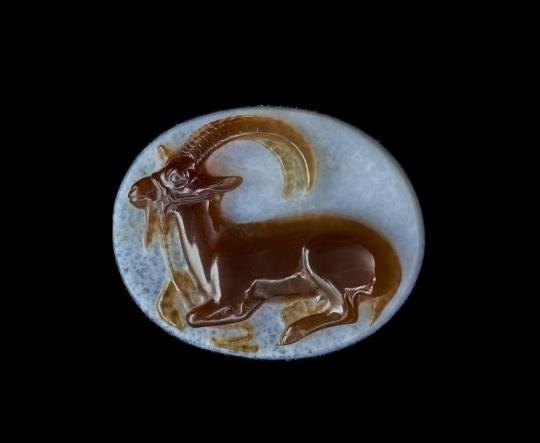
Sardonyx cameo, Roman, 1st-2nd century AD
from The British Museum
786 notes
·
View notes
Text
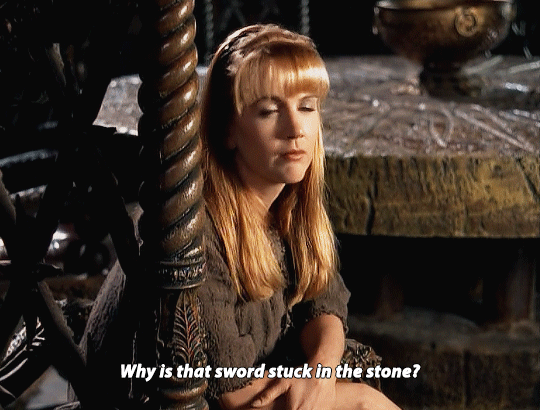
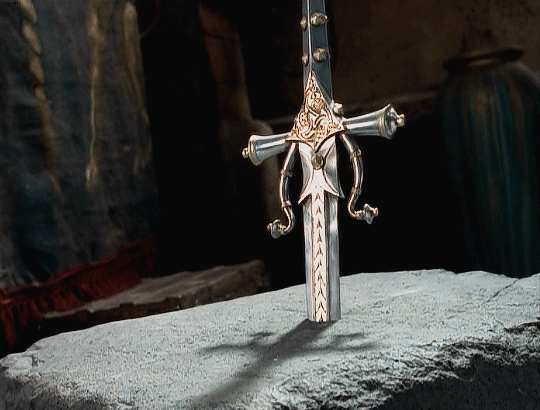






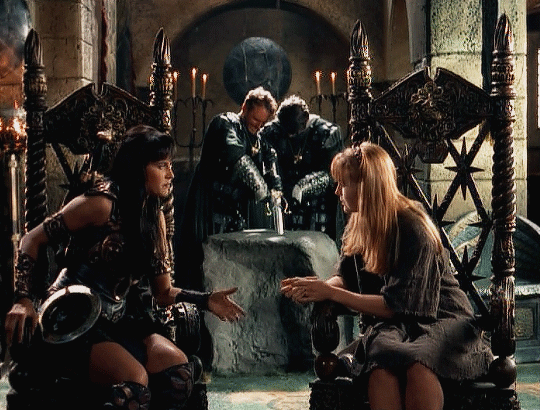
Xena Warrior Princess 3.05 Gabrielle's hope
78K notes
·
View notes
Text


Gold and garnet cross ring, Visigothic Spain, 6th century AD
from The National Archaeological Museum, Madrid
379 notes
·
View notes
Text

Dr. Gorst, who is so excited to tell you all about his latest hyperfixation which is the torture method he recently invented where he forces you to listen to recordings of the screams of alien babies being murdered with flame throwers

Captain Kaido, the "Crises Management Expert" who wants to get this genocide over with as quickly and efficiently as possible so he can clock out and be back home in time for dinner.

Dr. Royce "Space Mengele" Hemlock: Back in the Republic days he was stripped of his credentials for doing unethical and illegal research. Now that the Empire is in charge he is very busy doing medical experiments on young children who he only refers to as "the specimens".
21 notes
·
View notes
Text

Terracotta vase in the form of a duck, Greek mid 6th century BC
from The Metropolitan Museum of Art
189 notes
·
View notes
Text

Gilded copper reliquary casket, French, circa 1200-1220
from The Kimbell Art Museum
165 notes
·
View notes
Photo
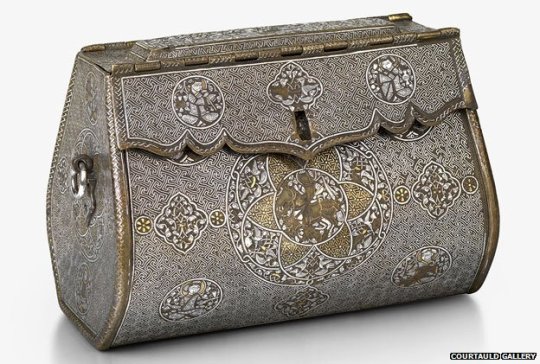
Artefact identified as a handbag from 14th century Mosul, Iraq. Made of brass, inlaid with gold and silver. A court scene showing Il-Khanid influence is seen along the top:
A man and a woman (slightly damaged) in Mongol clothing and feathered hats appear seated on a dais, surrounded by attendants and courtiers, including a falconer on the far left, a lute player on the far right and parasol carrier (also on the right).
A page to the right of centre in the above scene is said to be carrying the handbag over their right shoulder, a mirror in their right hand, and a napkin in their left:
(Images and descriptions via the BBC: The world’s oldest handbag?)
#I am not clear on why they think it’s a women’s handbag specifically #do men at court never need to freshen up? #napkin? mirror? no? #and the way they talk about ‘islamic art’ in the article kinda irritates me #so read it if you feel like being annoyed
181 notes
·
View notes
Text
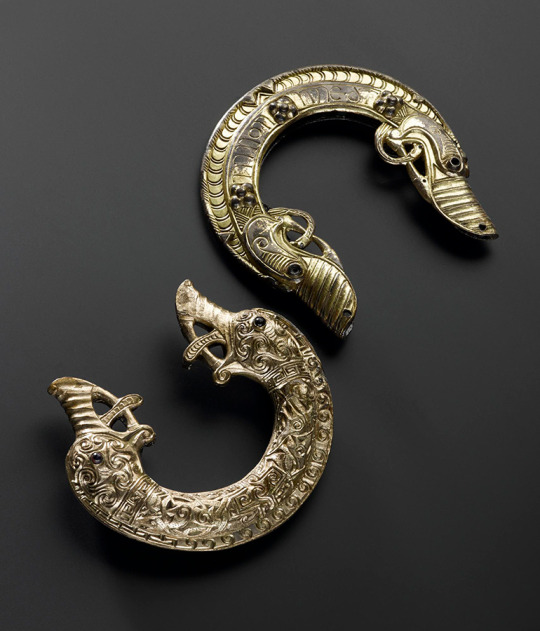
Silver sword scabbard chapes uncovered on St. Ninians Island, Shetland Islands Scotland.
Pictish, circa 800 AD
277 notes
·
View notes